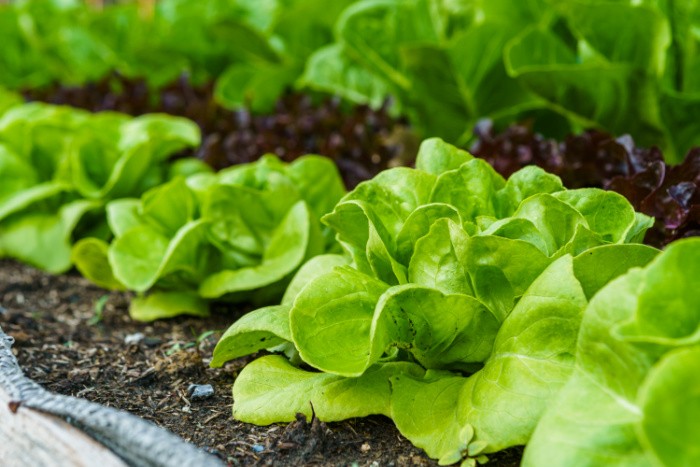
If you’ve always wanted to have a garden, here are the easiest vegetables to grow for beginners. Yes, you can do it, I promise. There is something about growing your own food. You cultivate the soil, plant the seeds or seedlings, and then wait for those seeds to sprout or seedlings to mature. I wanted to update this post as a reminder to start putting your garden plans together.
You can grow plants in pots, in raised garden beds, and in the ground. If you have a balcony, a small yard, a medium-sized yard, or several acres of land, you can grow some, or a large majority, of your own food.
Obviously, the bigger the yard, you will probably need a tiller. Mark and I used to have a tiller, those days are gone. We don’t have nearly as much land now. We have raised garden beds and they suit us fine. I really can’t wait to get up in the morning to go outside and check on my “food supply.”
We’ve talked about this before, with all the food that is being recalled for E-coli, Salmonella, listeria, or whatever, we need to grow at least a few vegetables for ourselves. Hopefully, the weather has calmed for some of you who have been slammed with horrific storms and very cold temps. I’m hoping your soil has dried out enough so you can start your garden now, or very soon. If you missed my post on What To Plant In April, please check it out.
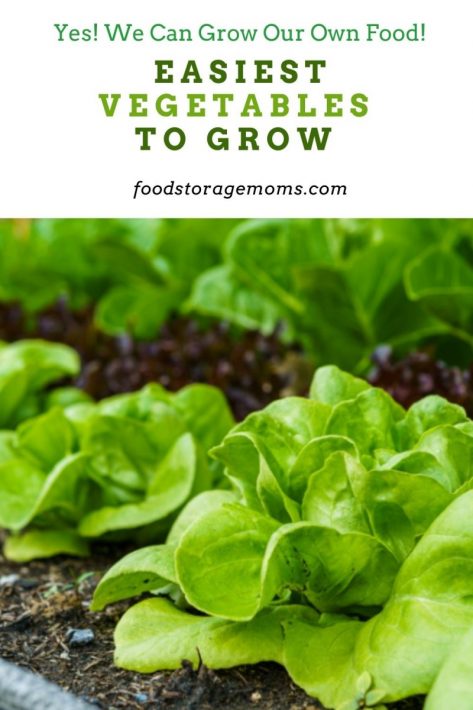
As you know, we have all been beginner gardeners at some point. Well, we have to start somewhere, right? I remember when Mark and I were first married and someone gave us a flat of 24 small tomato plants. We were so excited to be gifted those tomatoes. Mark was in school and we had one little girl. What a blessing those were to us.
In our backyard, we had a small section that was probably about 4 feet by 6 feet. You would never guess this, we planted ALL those tomato plants in that tiny area. The soil conditions were perfect. We had tomatoes galore. I still laugh about our first garden in Salt Lake City, Utah. Life is so good.
Today, I put together a list of the easiest vegetables for you to grow. You can pick and choose the ones you like to eat. Don’t be afraid to try some new ones, you may end up loving them too.
How I Store My Garden Seeds
Plastic Photo Container and Label Maker
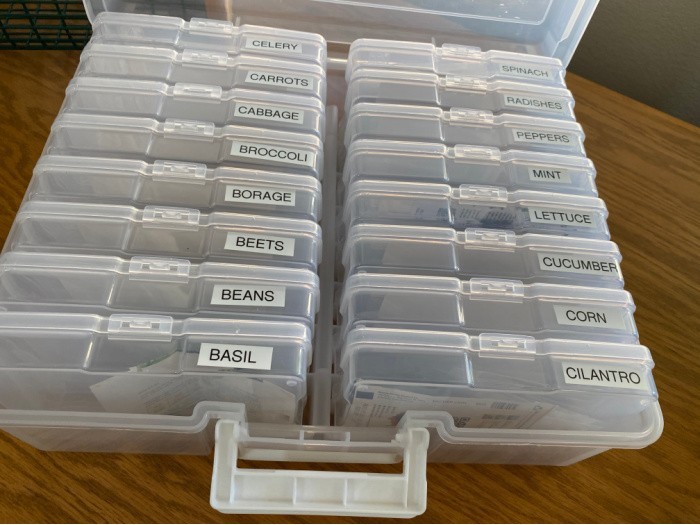
Easiest Vegetables To Grow
Amend The Soil If Needed
Before we get started with the vegetables you can plant, let’s be sure your soil is ready. Here are my tips for soil, I do this every Spring and Fall.
The first thing we need to do is pull any weeds that have come up since the last time you turned over the soil. Dig out any leftover crops that you may have missed the last time you harvested. Turn the soil several times and add the following amendments, if you need them.
Earthworm Castings Organic Fertilizer
Soil pH Levels
What Does The Term pH Level Mean
Are you wondering what the term pH level means when gardening? Each plant prefers a different level of acidity to grow the very best harvest. The level of acidity desired varies between each plant. Therefore, you can adjust the pH of your soil by adding lime or sulfur to bring it up or down, depending on what your soil needs. You can have your soil tested, possibly by your state extension service, or try and do it yourself with a soil tester. pH Tester
How To Hand Pollinate
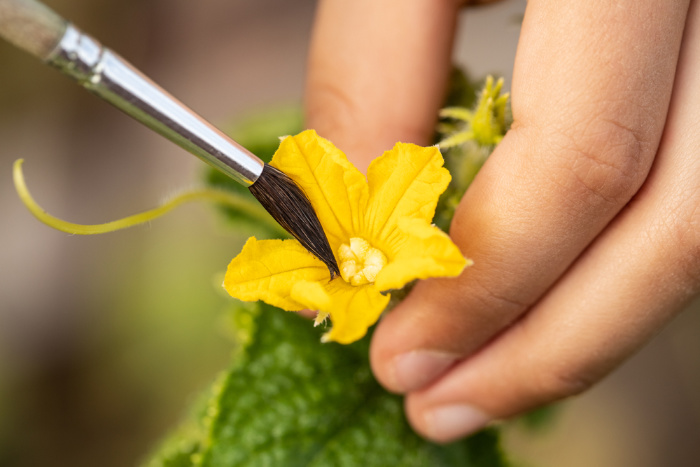
All you need is a paintbrush if you need to hand pollinate because you are not seeing any fruit develop. Here is something you may want to try. You do this by removing the male blossom (male blossoms don’t have fruit behind them). They produce pollen, leaving the center covered in the pollen to collect with the brush. Use a “brush” to apply the pollen you collected to the center of the female flower. This works every time for squash, melons, and cucumbers.
1. Bell Peppers
Start your sweet peppers inside where they’re protected about 8-10 weeks before the last spring frost date in your neighborhood. I typically put three to four seeds in each seedling container and thin them down to two plants once they are about 4 inches tall. I use Miracle Grow Organic Potting soil, it works great when planting my seeds. I plant them 1/4 inch deep, cover them with soil, and water them. You can sow them directly outside as well, depending on soil and air temperatures.
Once the soil temperature stays above 65 degrees you are good to transplant. Be sure and “harden off” the seedlings about ten days before the transplant date. For those of you who may not be familiar with the term “harden off,” it is the process to help transition your plants that have been protected and coddled indoors early on so they’re ready to go to the more hostile outside world.
The good folks at Burpee have some great insight about this process as follows: “To harden off your seedlings, gradually introduce them to the outdoors. It helps to store your seedlings in trays, at this point, to make transporting the plants easier.
Take your seedlings to a protected location outside for one hour the first day. Do this each day for a week. Add one hour each day of the process. By the end of the week, you’ll be at 7 hours and the plants will be ready to be transplanted.” Great advice!
Fertilize the soil before planting the seedlings. Plant the seedlings about 18 inches apart. Sweet peppers require water and don’t like the soil to dry out too much from the heat. They should be watered consistently, as needed.
Canary Bell matures in approx. 100 days
Coral Bell matures in approx. 88 days
Big Red matures in approx. 75 days
California Wonder matures in approx. 75 days
pH level for Peppers: 5.5 – 7.0
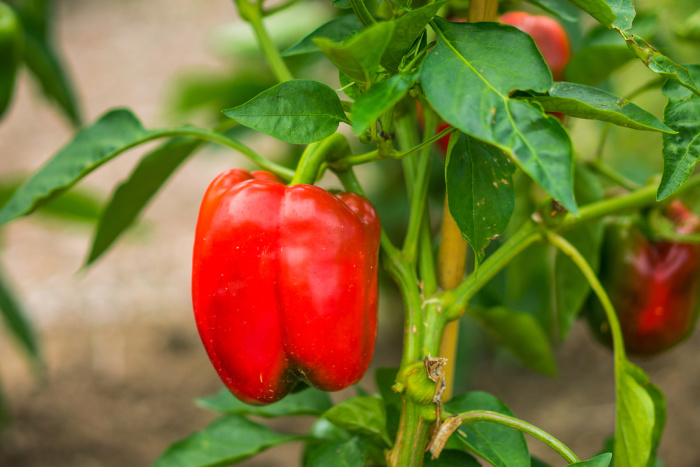
2. Carrots
Carrots like really smooth, loamy soil with nutrients added as shown above. I like to moisten the soil slightly and sprinkle the seeds over the soil and cover them with compost. Keep the rows about 3 inches apart, and stagger planting the seeds over two to three weeks to have an abundant harvest for the season.
If you live where the heat is intense, be careful as carrots don’t like to dry out. If you water them by hand for two to three weeks after planting the seeds you will soon see the little sprouts. This is when you will fertilize with some Miracle-Gro Fertilizer and thin the carrots as needed. Use mulch to cover them, if you live where the summers are extremely hot.
pH level for Carrots: 5.5 – 7.0
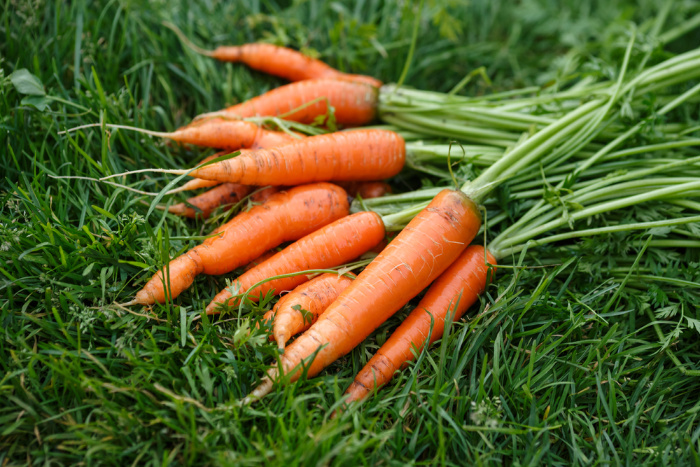
3. Cucumbers
Cucumbers thrive when the weather is hot and they receive a lot of water. Plant them in full sun. If you planted seeds inside, make sure you don’t set your seedlings outside until the weather is in the 70-degree range. Check the last frost date for your area and wait two weeks before planting the seedlings or seeds outside.
Decide if you want to grow bush cucumbers or cucumbers on the vine. I have always had better luck with bush cucumbers. Bush cucumbers work great in pots or in small garden spaces. This is why they do better in my raised gardens. I suggest you stagger when planting the seeds because you will have cucumbers bearing at different times, instead of all at the same time and resulting in a huge picking.
Cucumbers like compost and composted well-rotted manure. They need well-fertilized soil. Cucumbers grow fast and don’t depend on a lot of care or work to get them to thrive. When watering, try and keep the leaves dry, to keep leaf diseases forming. Male blooms show up first and drop off. No worries, within a week or two, a female flower will appear. If not, you may have to do hand pollination, as shown above. Again, you do this by removing the male blossom, leaving the center covered in the pollen. Use a “brush” to apply the pollen you collected to the center of the female flower.
Use metal cages for vine varieties. The cucumbers will hang better on those because they’ll attach easier to the cage wires when growing. Plant two to three seeds about one inch into the soil, and cover the seeds with soil. If the soil is moist and warm you will see sprouts within a few days. Plant the seeds or plants 36-60 inches apart. Bush cucumbers can be planted closer. Cucumbers grow from start to finish in 50-70 days.
pH level for Cucumbers: 6.5 to 7.0
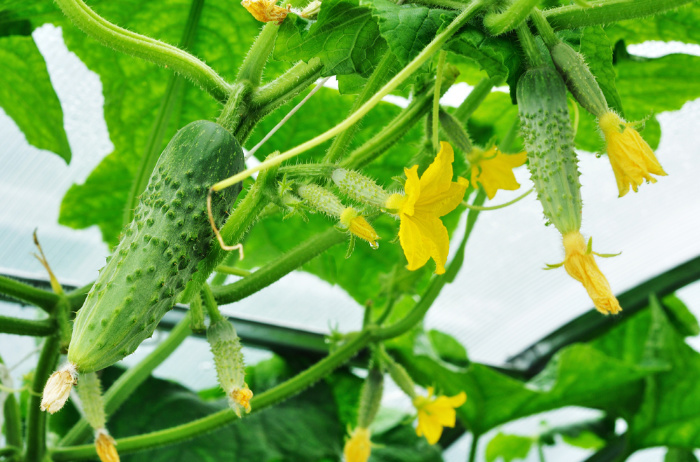
4. Green Beans
This is one of my favorite vegetables to grow. When our girls were growing up, we grew a lot of green beans. We canned bushels of them in our pressure cooker. They taste so good when they’re freshly picked. I only grew bush beans, but you can plant pole beans if you have a way to support them up off the ground. Bush beans grow about 2 feet tall and the pole varieties grow up to 10 feet tall. Bush beans are ready to pick about 50-55 days after planting. Pole beans take a bit longer, so plan on 55-65 days to harvest them.
Please remember, if you can stagger the plantings every 2 weeks you can harvest green beans for weeks rather than all at once in one week.
Green beans need a good composted rich soil with rotted manure. You plant the seeds 1-2 -inches deep and cover them with soil. Space the seeds in rows about 6-8 inches apart. Water immediately and keep regularly watering them until they begin to sprout. After they begin sprouting they need 1 to 1.5 inches of water each week. They need full sun, so plan accordingly. They grow best when the air temperatures are between 65 to 85 degrees.
When the green beans are the size of a pencil, they’re ready. The skins can toughen up very quickly, so check on them often. You pick them by snapping them off at the vine.
pH level for Green Beans: 6.0 to 6.2
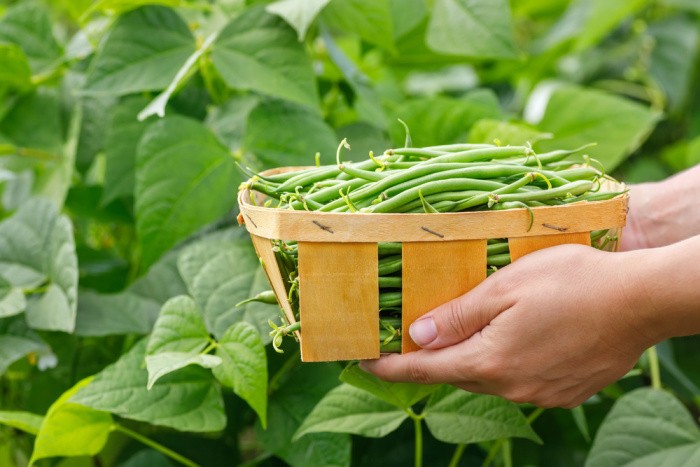
5. Lettuce
Add the amendments above to the soil where you plan to plant your lettuce seeds. The nice thing about lettuce is it’s so easy to grow and sprouts up pretty fast. Just make sure the soil is loosened, loamy, and well-drained. Lettuce loves nitrogen and potassium, so keep your eye on the leaves as they start to grow. Work in a lot of organic matter or compost. Lettuce matures in 55 to 60 days. Romaine takes longer to mature, and so do head lettuce varieties.
Plant the seeds about 1/4 inch deep, tamp them in the soil, and water them in. Easy and simple. Read the package to space according to the lettuce variety you choose. Seeds won’t germinate in soils above 80 degrees F. You can start some seeds indoors and transplant the seedlings into a shady spot when the weather is too hot outside. You may want to choose heat-resistant varieties if you live where the temperatures get very hot in the summer. It’s better to pick early than late because the leaves become bitter over time.
pH level for Lettuce: 6.0 – 7.0
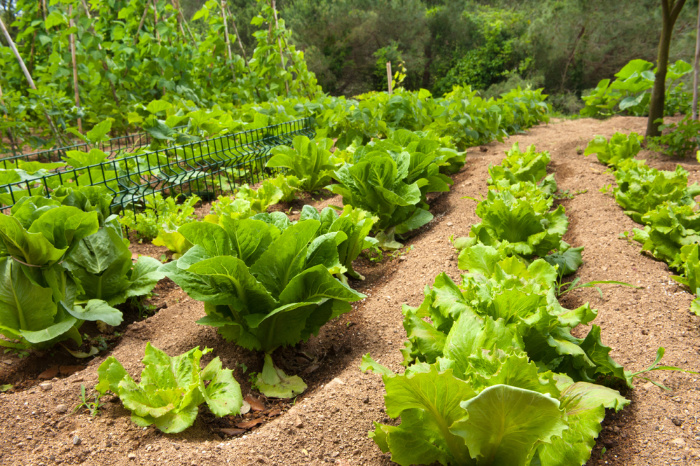
6. Radishes
I like the radish variety called Red Champion because they are larger and have bright red skin. They grow in small areas, and the days to maturity are 25-30 days. Another one I like is called Pink Beauty because the white flesh is crisp and mild. They grow really well in pots or containers. Their days to maturity are 25-30 as well. I just sprinkle the seeds over the soil, do a slight soil coverup and sprinkle with water. If you stagger the planting days you will have several days of freshly picked radishes at harvest time.
pH level for Radishes: 6.0 – 7.0
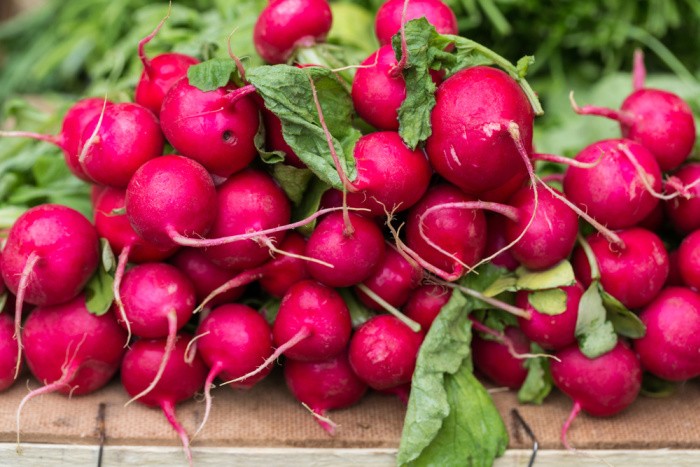
7. Spinach
I plant the New Zealand spinach seeds because they can withstand the heat of Southern Utah. It’s a large growing plant, but I make salads, smoothies, and freeze a lot of spinach for the year. This is one spinach variety that grows from spring to fall without any issues. The more I cut it back the more it grows, literally. Days to maturity are 75 days.
Here again, make sure your soil has the amendments above and you turn over the soil again and again. Plant the seeds at least one foot apart and the rows two feet apart.
pH level for Spinach: 6.0 – 7.5
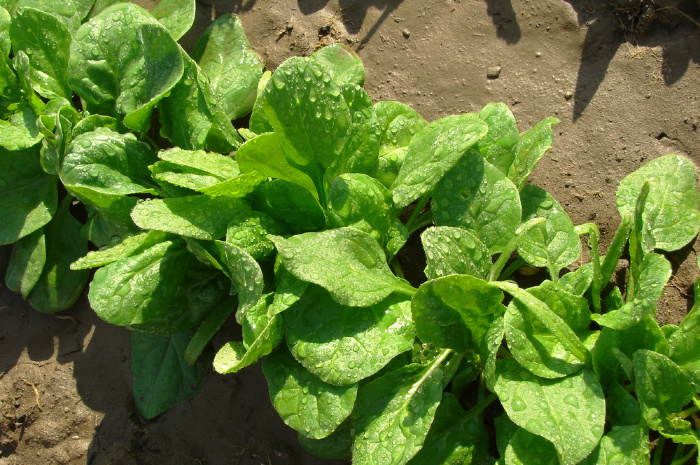
8. Tomatoes
Let’s talk about tomato choices. You have to decide if you are just going to eat BLT’s, that’s awesome! If you want to make salsa, tomato juice, or spaghetti sauce, you need to think about which tomatoes are best to use. Of course, these have to be good for your area. I only know Utah, so I’ll share what I’ve done for years. These are 100% Heirloom/Non-Hybrid/Non-GMO tomatoes.
- Abraham Lincoln: 1 lb. heirloom, great for ketchup and tomato juice. Easy to grow and matures in 85 days.
- Beefsteaks are large tomatoes, can be over 2 lbs., are easy to grow, great for slicers, and mature in 85 days.
- Bonnie’s Best: 6-8 ounce fruit, great for slicers or canning. Matures in 85 days.
- Marion: chefs prefer these crack-resistant tomatoes. Great for salads or sandwiches. Matures in 75 days.
- Pear: pear-shaped fruits that grow in clusters. Great for salads. Matures in 75 days.
- Homestead: a popular heirloom variety. They are suitable for canning and are excellent in hot climates. They mature in 80 days.
- Mortgage Lifter: they produce large tomatoes, up to 2 lbs. Easy to grow and matures in 70 days.
- Money Maker: It’s one of the most reliable tomatoes you can grow. It grows up to 8-ounce tomatoes, is easy to grow, and matures in 85 days.
The best time to plant your seeds indoors is about 6-8 weeks before the last expected spring frost in your neighborhood. You can grow your seedlings or plants about two weeks after the last spring frost. You can enter your zip code on this website to find the best start dates. Farmer’s Almanac First and Last Frost Dates By Location
It’s really easy to grow tomatoes from seeds. You can start with seed pellets or plant them in smaller containers and transplant them to larger containers, as needed. The seeds don’t need light, so you can put them on top of your refrigerator to keep them warm and help them to germinate. As soon as the seedlings pop up they need sunshine. You can put them on a window shelf or a table close to the window. You should see them poke through the soil in 7-10 days.
The seedlings need the temperatures to be 70 degrees F during the day and 40 degrees F at night. Once the seedlings reach 4 inches tall, transplant them into larger containers. Please plant them deeper than other vegetables.
pH level for Tomatoes: 6.0 – 6.8
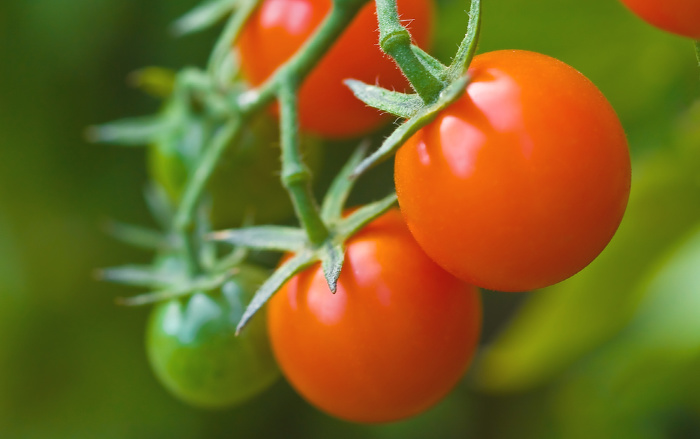
Please Check Out What To Plant Each Month:
- What To Plant In January
- What To Plant In February
- What To Plant In March
- What To Plant In April
- What To Plant In May
- What To Plant In June
- What To Plant In July
- What To Plant In August
- What To Plant In September
- What To Plant In October
Final Word
If you’ve always wanted a garden, the ones discussed in this post are the easiest vegetables to grow. You can do it, my friends, one step at a time. It’s all about being self-sufficient and growing our food. Thanks again for being prepared for the unexpected. May God bless this world. Linda
Copyright Pictures: Lettuce AdobeStock_424113118 by Thinapob, Carrots on Grass Depositphotos_80366386_S By maxsol7, Red Ripe Tomatoes Depositphotos_2400994_S By Frankljunior, Spinach with Water Drips Depositphotos_11143472_S By DLeonis, Radishes Depositphotos_110047938_S By wjarek, Pollinating Plants Depositphotos_219055640_S By Elena@Mas, Lettuce Growing Depositphotos_4125122_S by ivonnewierink, Red Bell Peppers Depositphotos_81608898_S By Ehaurylik, Green Beans In Basket Depositphotos_595746046_S By AlterPhoto,Cucumbers Growing Depositphotos_11914800_S By Syaber
The post Easiest Vegetables To Grow appeared first on Food Storage Moms.
from Food Storage Moms
No comments:
Post a Comment